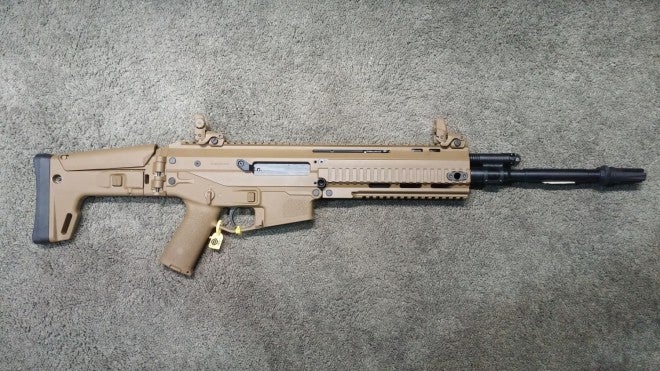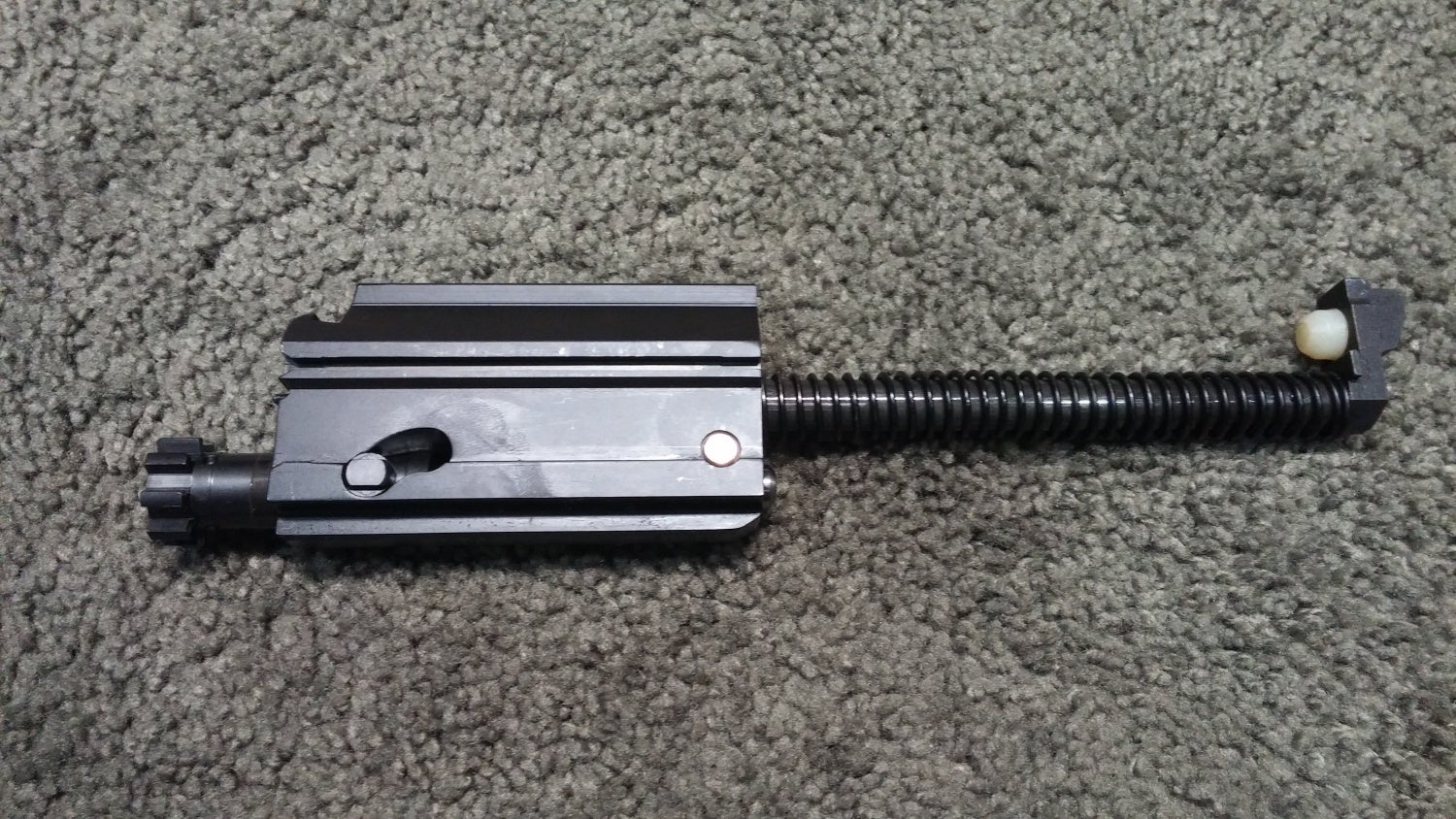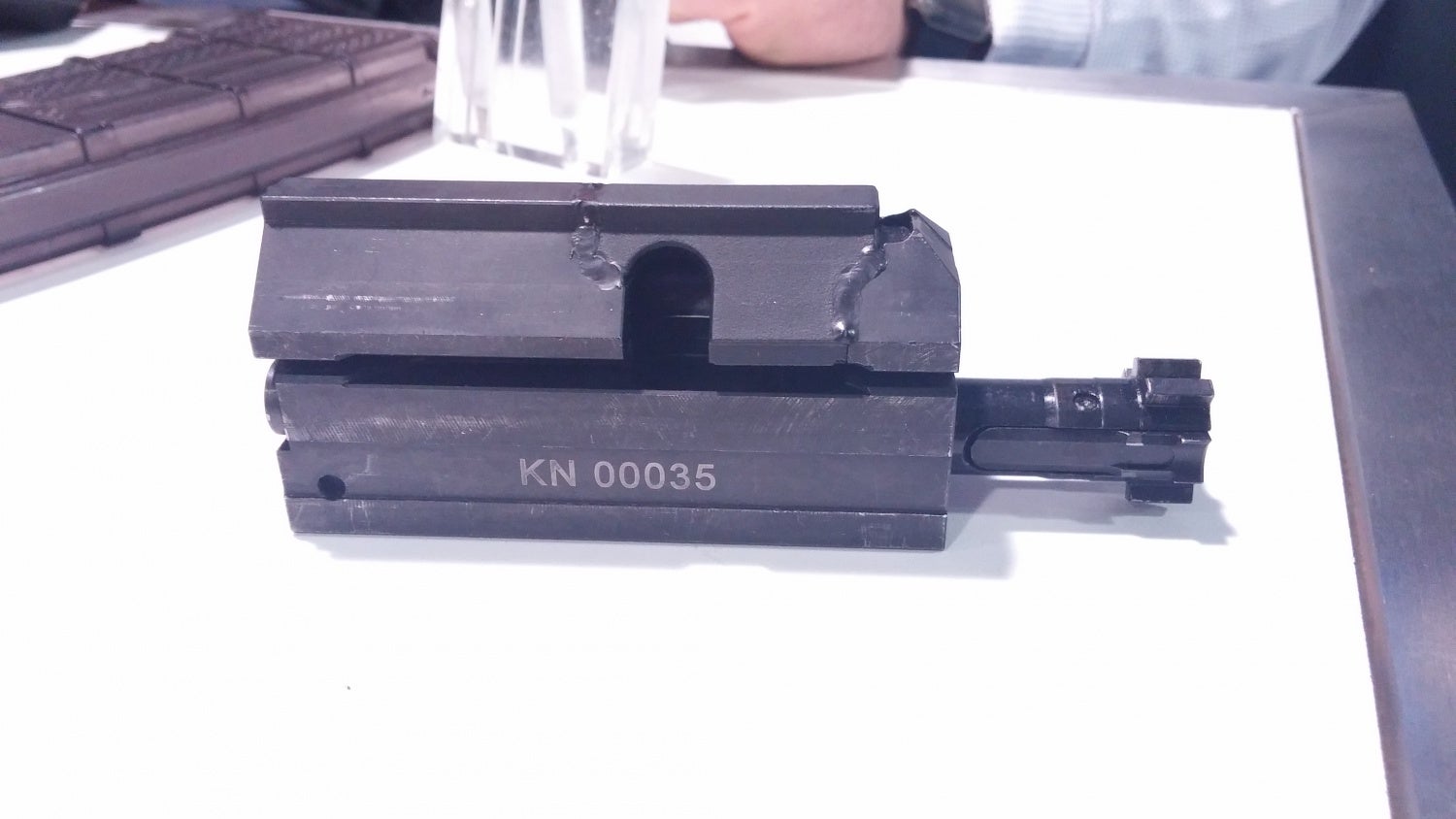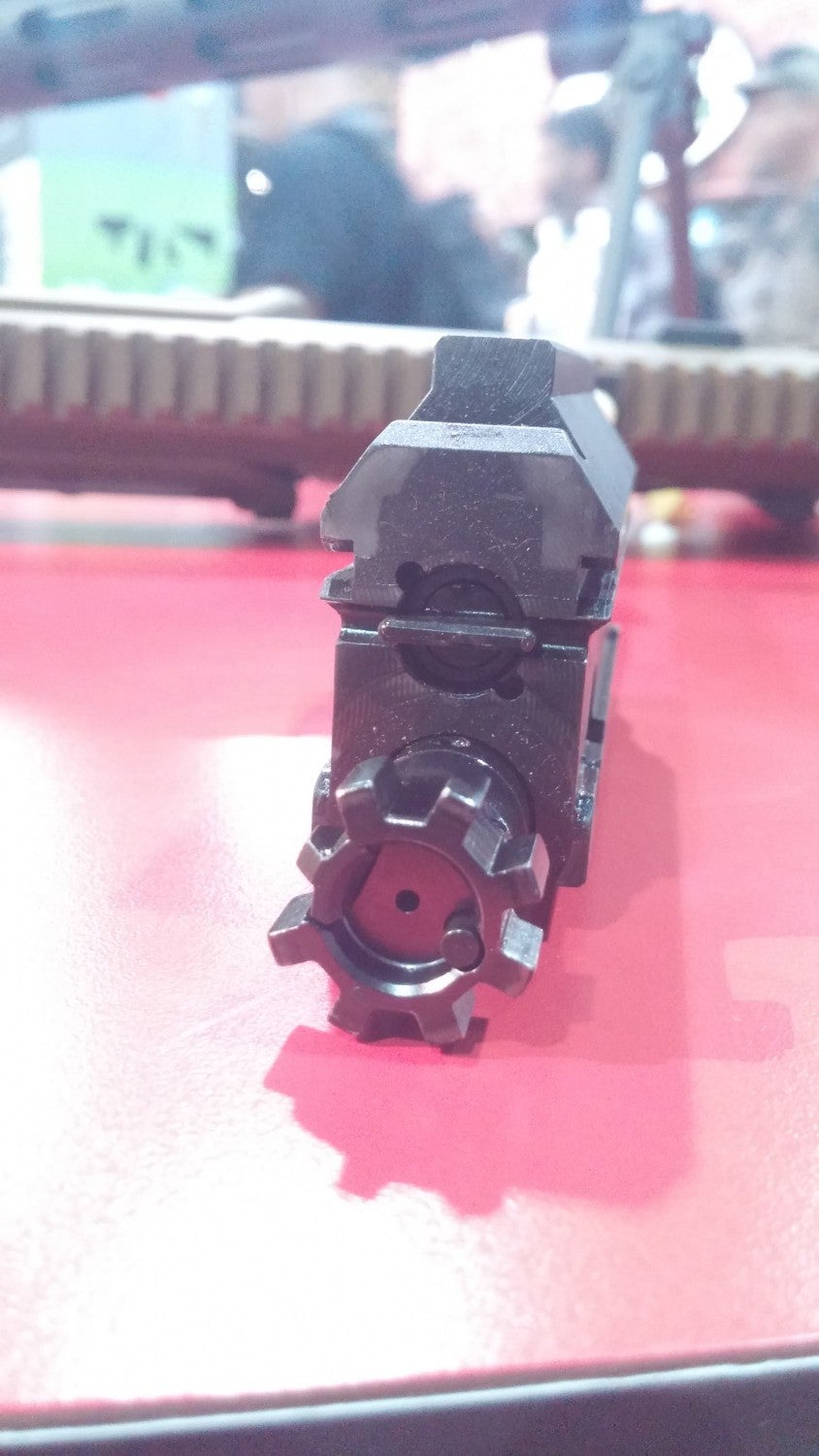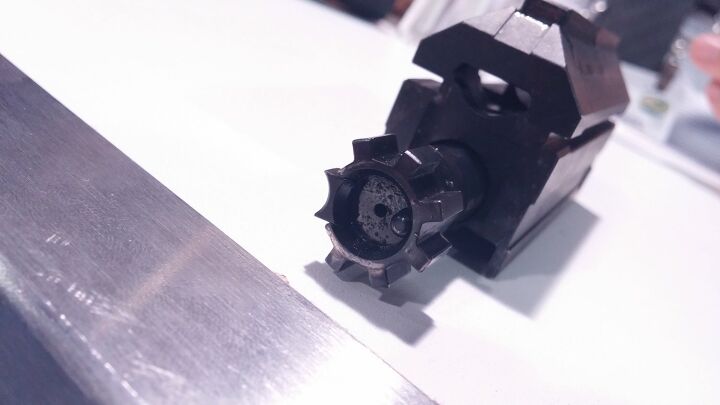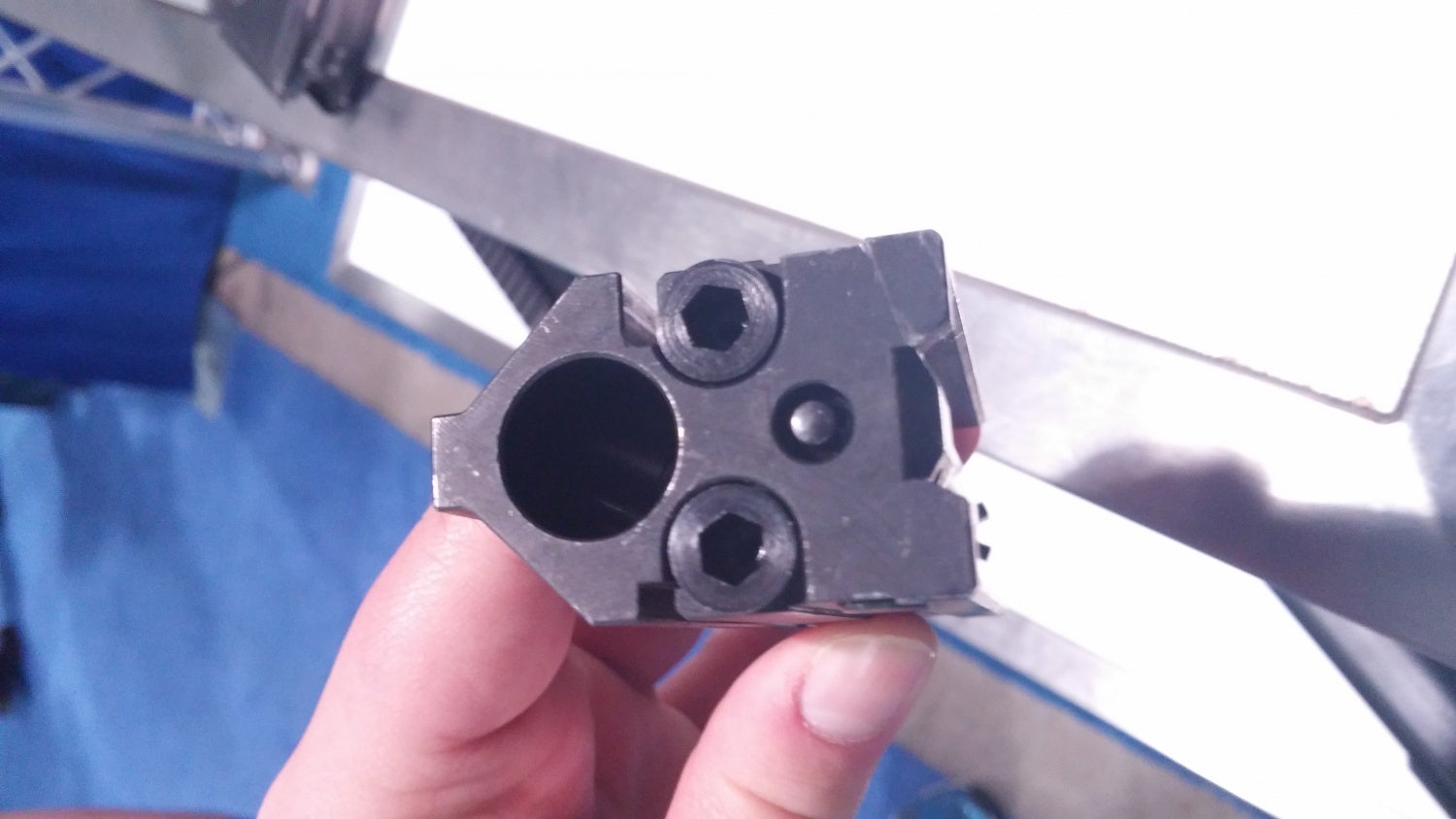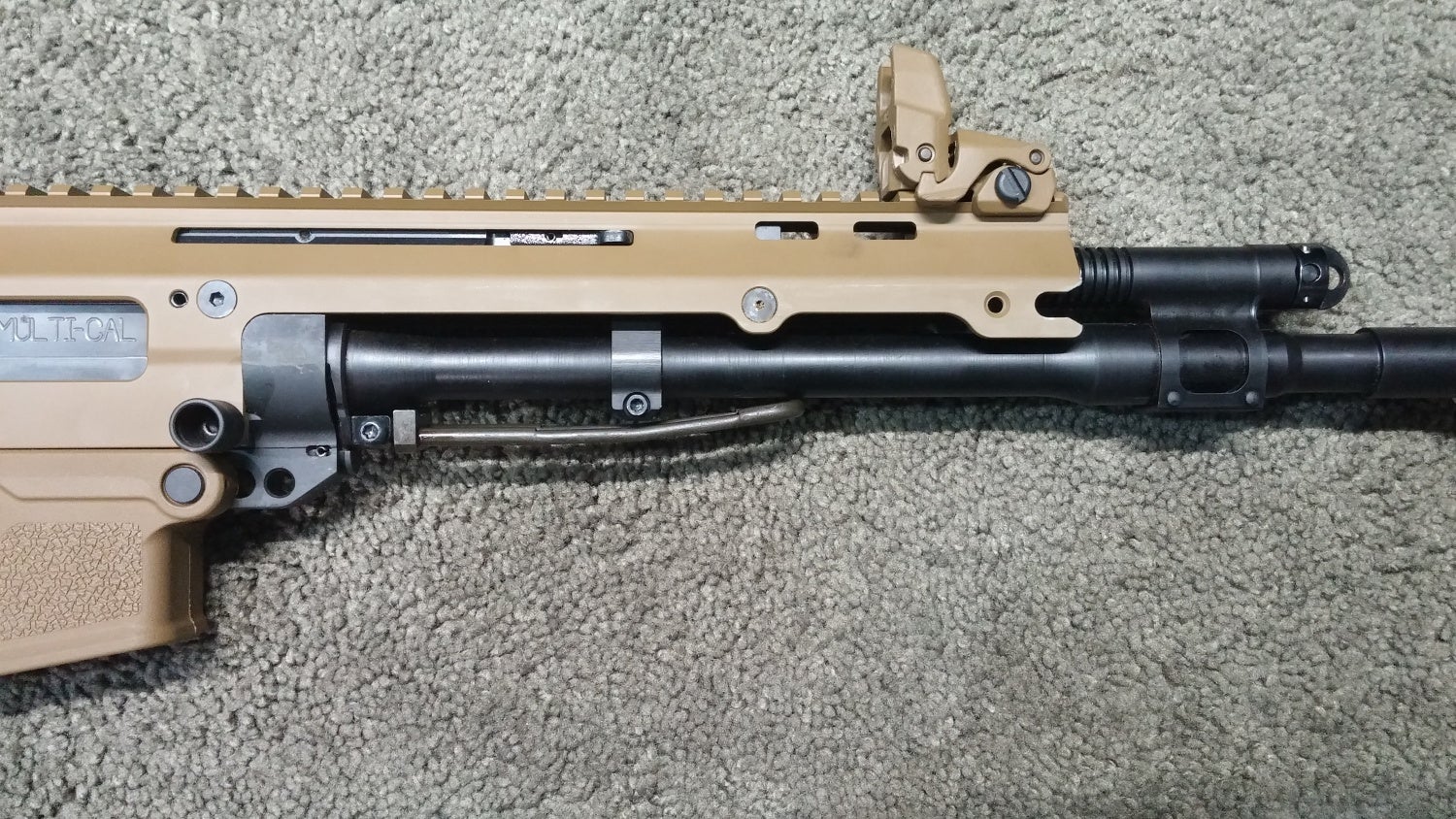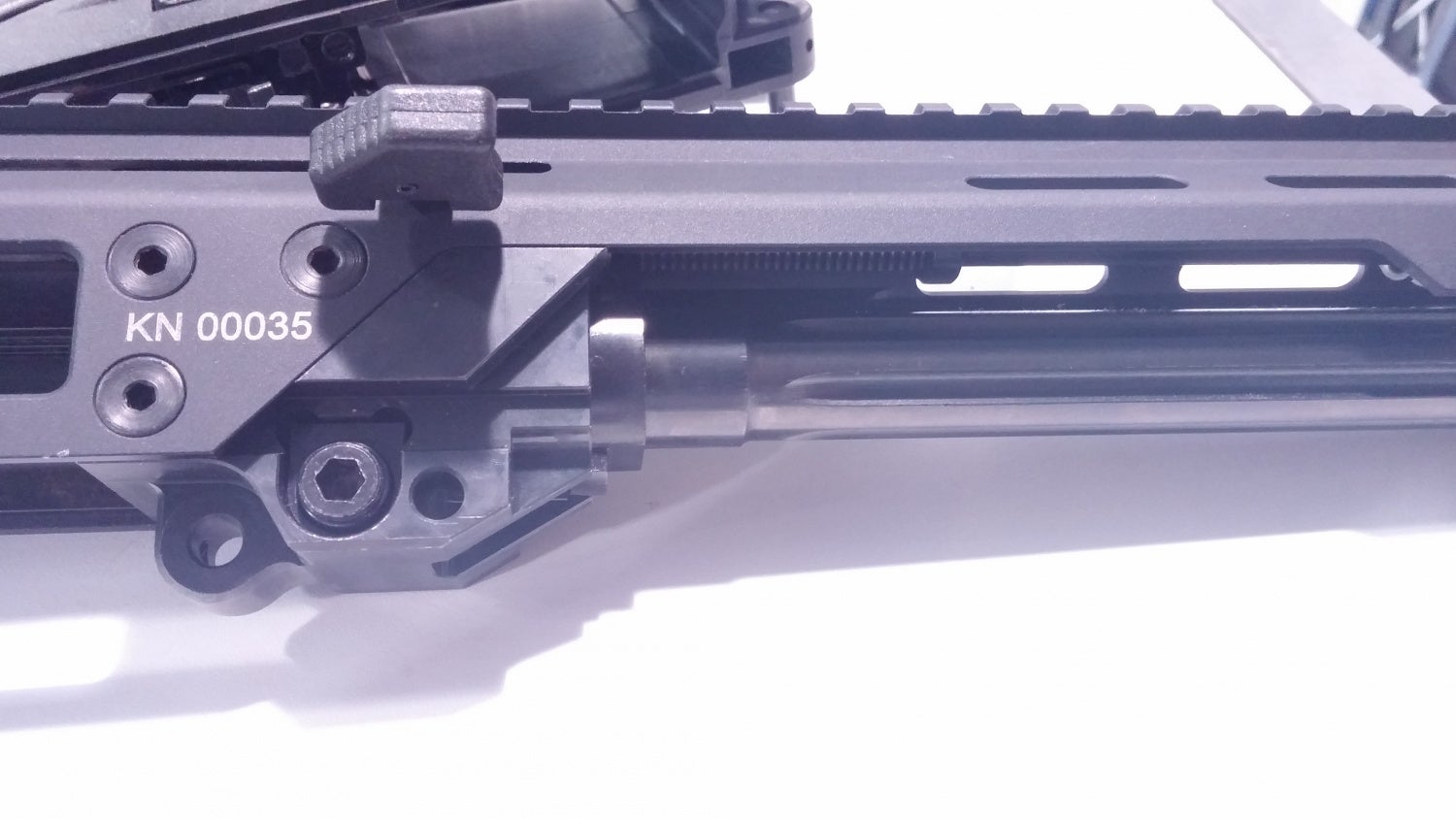Since the announcement that Fabryka Broni is seeking to import the MSBS modular rifle into the United States civilian market, there has been a great deal of discussion about the relationship of the MSBS to the Remington ACR or Magpul Masada. The two rifles are very similar, similar enough that I’ve previously referred to the MSBS as a “Masada derivative”, but I wanted to take a closer look. Therefore, at the 2016 SHOT Show, I took a look inside both rifles, to compare their similarities and contrast their differences. I found that, while there are conspicuous similarities that previously led me to believe the MSBS is a Masada derivative, there are also a great deal of subtle differences that suggest more convergent development based on similar requirements and design philosophy – and likely cross-pollination of a few ideas – than the Fabryka Broni team picking up where Magpul left off.
Let’s explore what I’m talking about. First, the takedown of the two rifles is different, with the ACR having a similar takedown to an AR-15, with the upper receiver hinging open with the buttstock attached to the lower receiver (it differs from the AR-15 in that a single pushpin is what locks the buttstock to the lower):
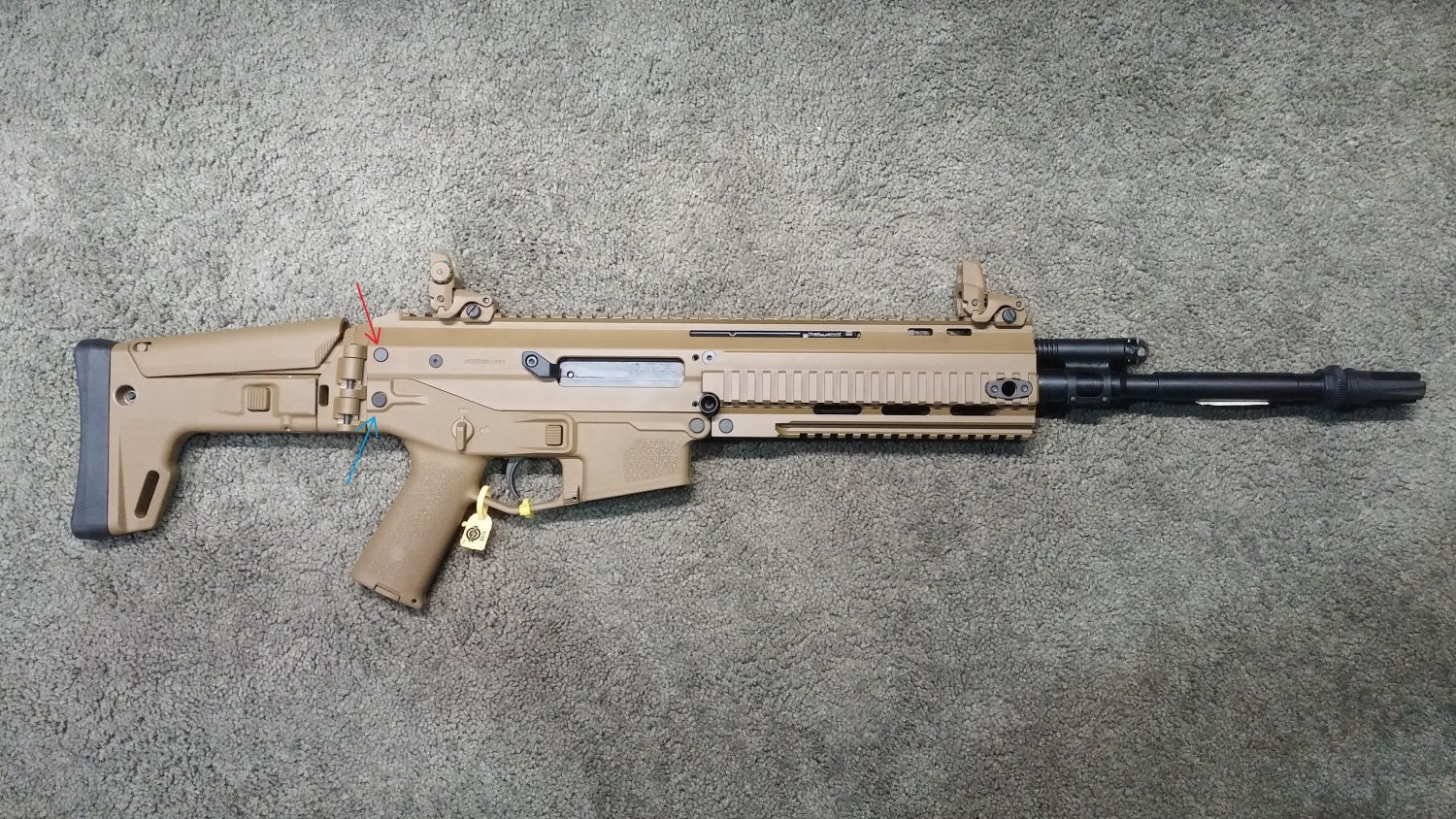
The red arrow at top points to the takedown pin of the ACR. Push that pin out from left to right, and the gun shotguns open like an AR-15. The blue arrow at bottom points to the stock removal pin. It’s not necessary to push out this pin to disassemble the ACR.
The MSBS, however, uses a different takedown system, more similar to a G36 than an AR-15:
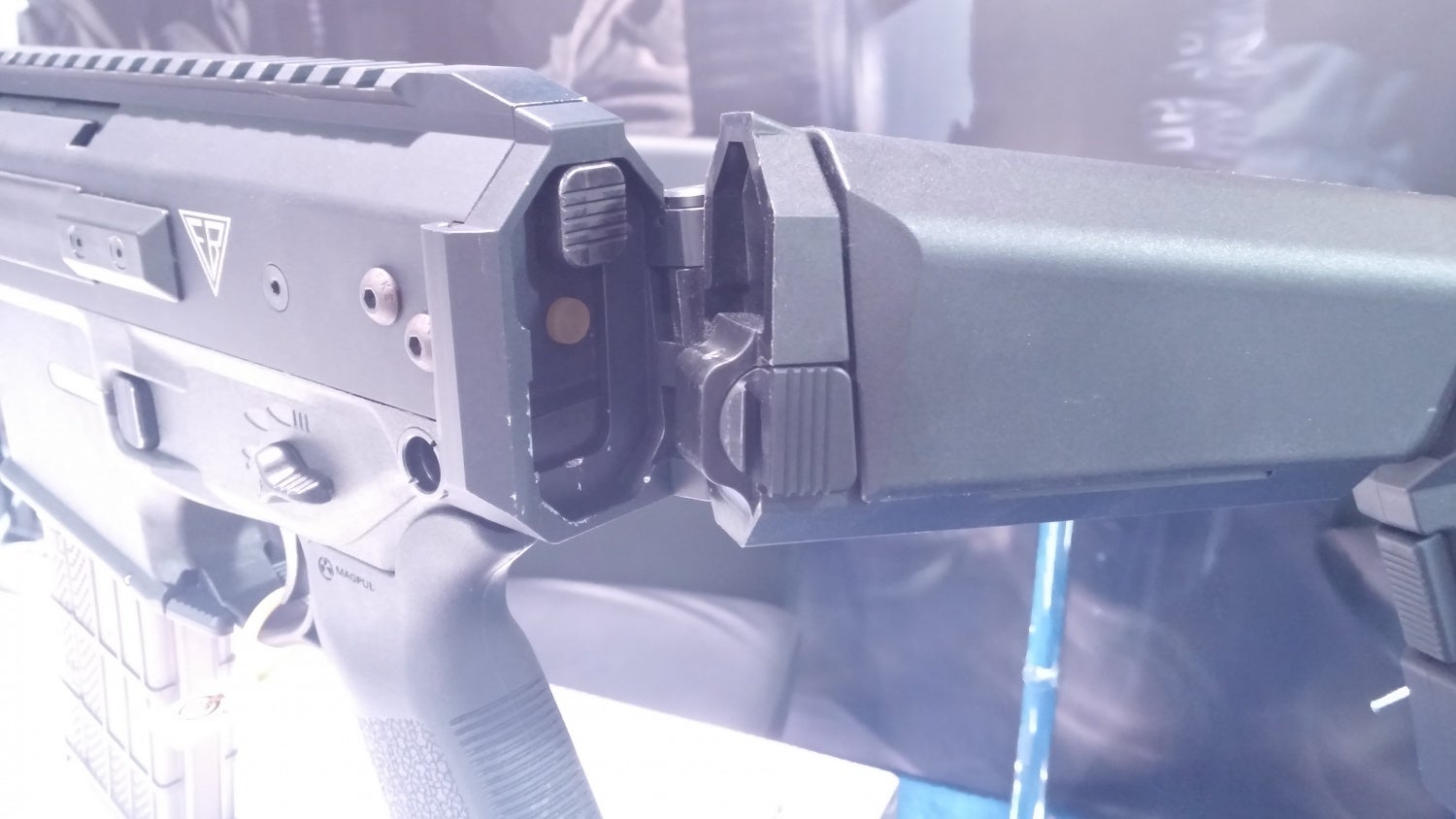
On the MSBS, the buttstock and upper are held together by the slot in the buttstock frame. To field-strip the MSBS, fold the buttstock, push the large textured button inside the stock housing, and slide the stock off of the rifle. It will then hinge open like an AR-15.
Once both rifles are field-stripped, out pop two very similar looking bolt groups. In detail, however, there are some significant differences between them:
Both use Stoner-type multilug rotary bolts, with roughly hexagonal cross-section bolt carriers with forward assist notches cut in the front, but while the ACR has a fixed (removable with effort) guide rod and spring assembly, the MSBS has one that falls right out of the carrier. Unlike the ACR, the MSBS has a cam pin located in the 12 o’clock position when the bolt is fully extended, not the 3 o’clock. One can also see that while the ACR’s bolt carrier is milled from a single piece of steel, the MSBS has a carrier made from two pieces welded together. Presumably, this is to facilitate some complex shape inside of the carrier that could not be achieved by machining from one piece.
Taking a look at the bolt faces of the two rifles, we can see that versus the ACR the MSBS has one fewer lug (also like a G36), as well:
From the views above, one can see just how similar the cross-sections of the two bolt carriers are. Both use a rectangular cross section with a sort of Aztec pyramid profile on top. One more thing that is very evident from these photos is how compressed from top to bottom the MSBS’s operating group is versus the ACR’s. This is a major reason that the MSBS is lighter and looks more svelte than the ACR, as the top to bottom volume of the receiver is significantly less.
The MSBS also features two Allen screws in the rear of the bolt carrier, although I am not sure what they are there for:
Visible in this shot is the very small-diameter firing pin of the MSBS. In contrast, the ACR uses a unit very similar to an AR-15’s.
One of the advantages the MSBS has vs. the ACR in terms of reliability is substantial underlug, or travel before the bolt makes its unlocking turn. This delays extraction of the case, allowing the case walls to contract again and ensures smoother extraction and functioning. To facilitate this, the MSBS has a much longer – and therefore heavier – bolt.
The MSBS and ACR sport different methods of barrel retention. The ACR has the famous “ratchet” quick change barrel device:
While the MSBS uses a simpler and lighter locking screw:
Notably, both use “half length” upper receivers, which are monolithic to support a full-length rail and shield the operating mechanism, but feature separate 3, 6, and 9 o’clock rails. Note the MSBS’s heavier fluted barrel profile, as well as the lack of an additional gas piston support around the barrel. The folks at Fabryka Broni were very proud that they were able to eliminate that extra element. Also notice the placement of the charging handle, very similar to the original Masada. Like the ACR, the MSBS uses a push pin to retain the handguard.
A final similarity to take note of: Both the ACR and MSBS use AR-15-derived modular (trigger pack type) fire control groups, however the MSBS rifles at the show were select-fire units, and featured what I believe is a very simple and effective style of full auto sear:
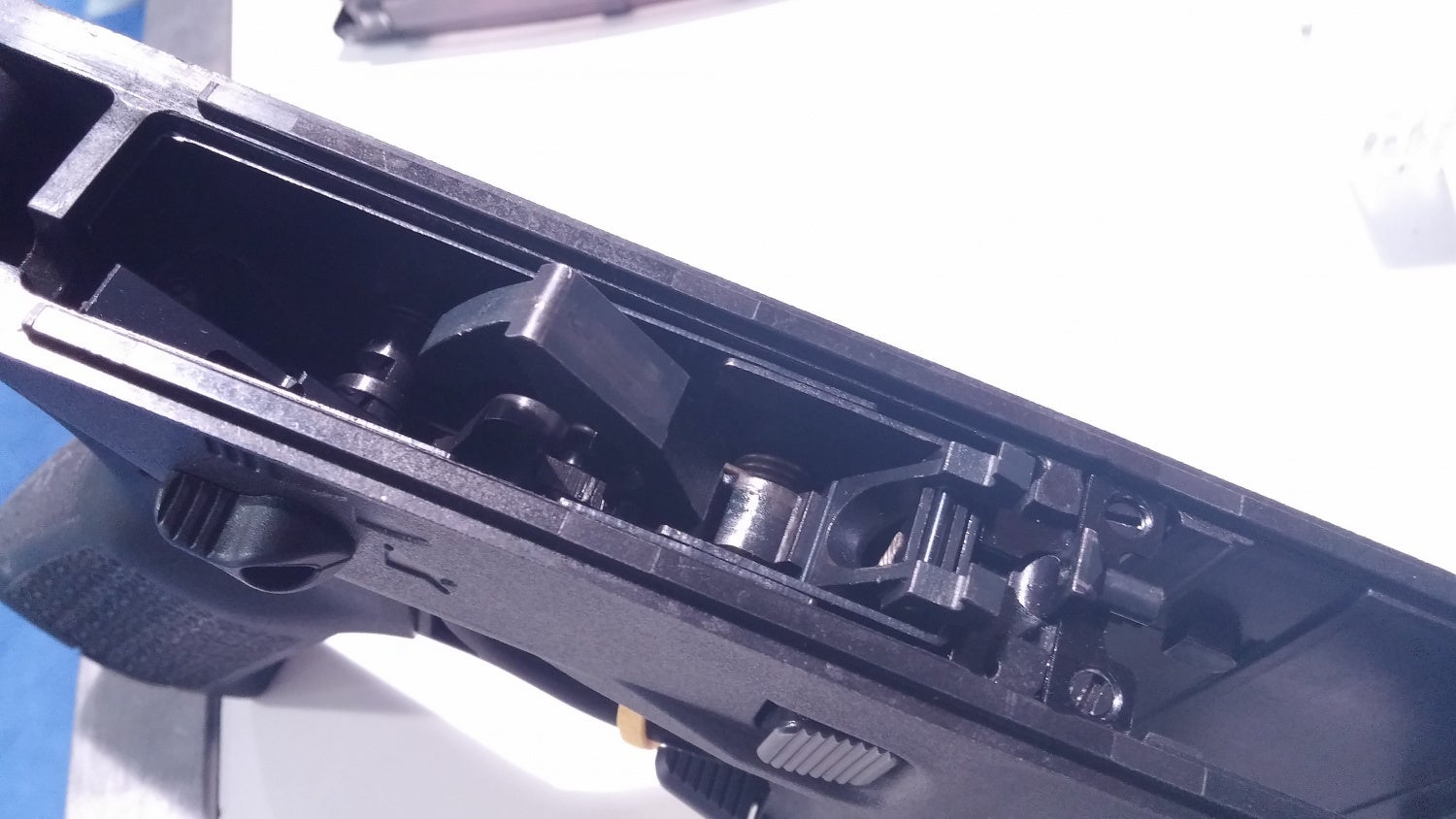
The yoke-shaped block in the front of the trigger group is – I think – the auto sear. If the bolt hit this block upon its frontmost travel, it could conceivably depress the sear and fire the weapon fully automatically.
There are many similarities between the MSBS and the Masada/ACR that I did not cover here (including the construction of the upper and lower receivers, and much of the basic architecture). Having taken a closer look, I don’t feel like I can say to what extent the MSBS team was influenced by the Masada. What is most interesting about these observations to me, however, is that possibly the G36 was an influence on the MSBS’s design team. It would make sense, as the G36 has become one of the most influential rifles in European small arms design in the 21st Century, with both the FN SCAR and CZ Bren 805 taking many cues from it.
 Your Privacy Choices
Your Privacy Choices
